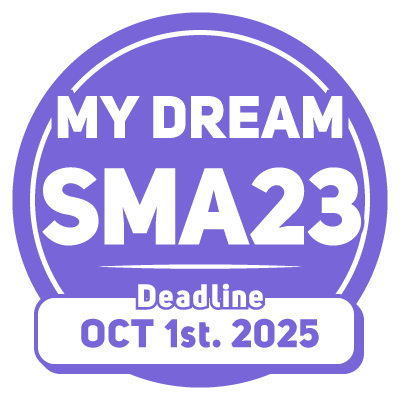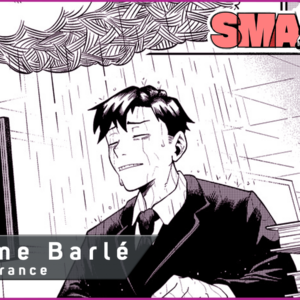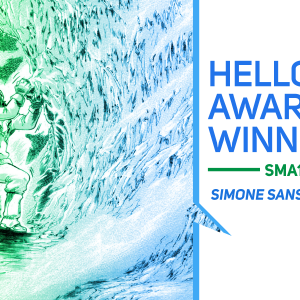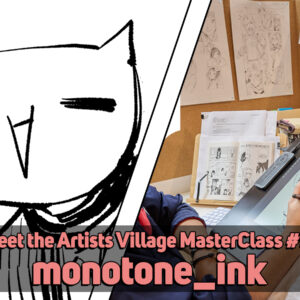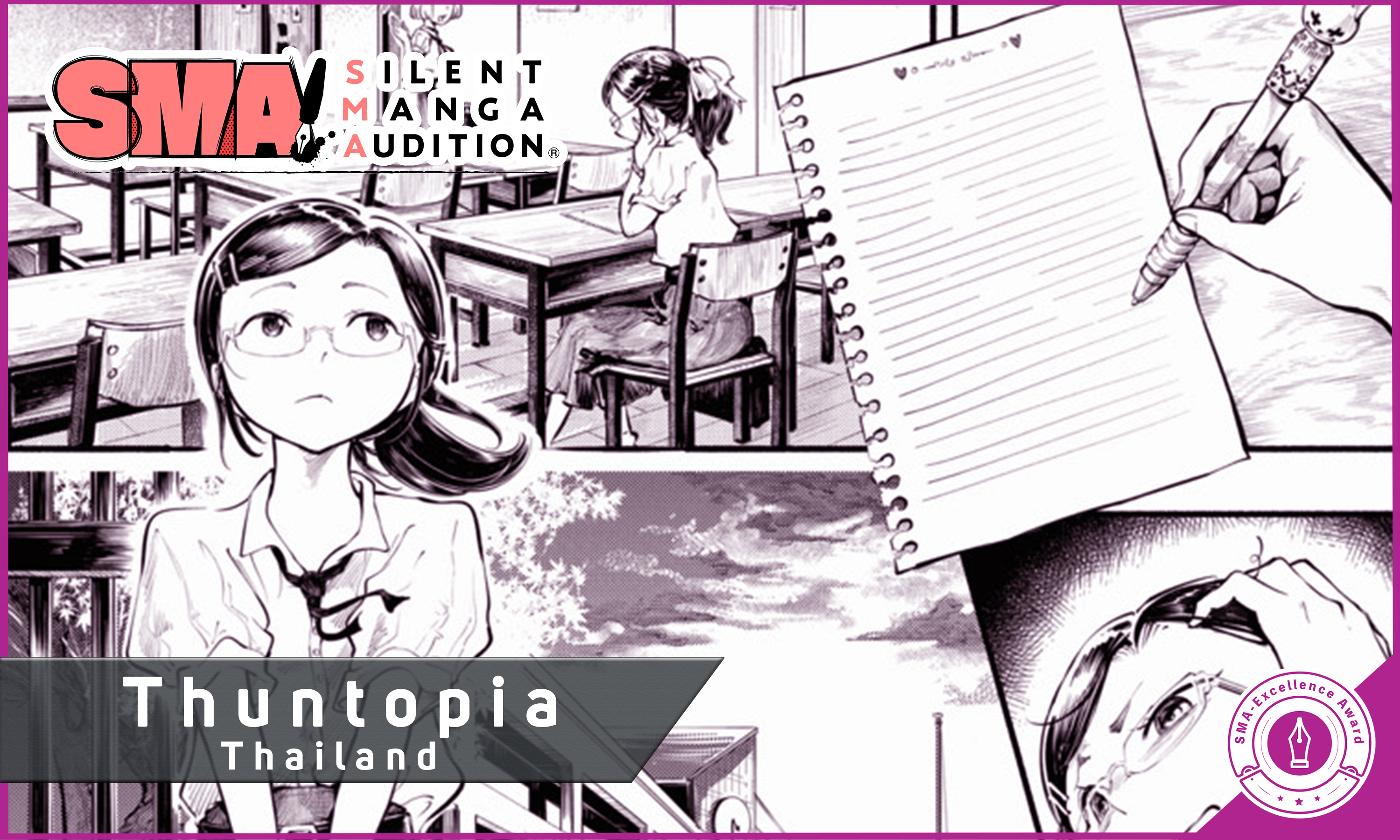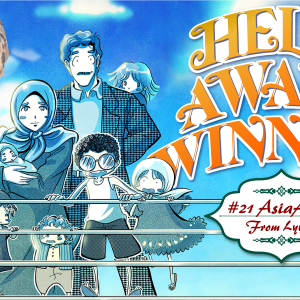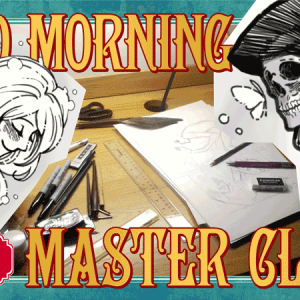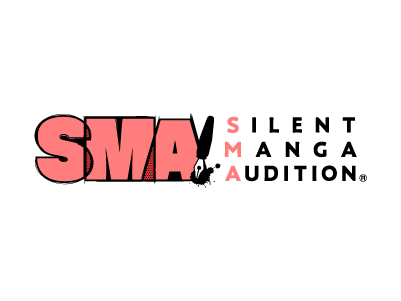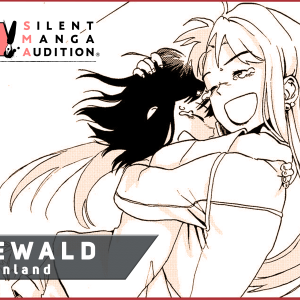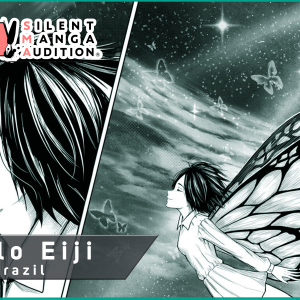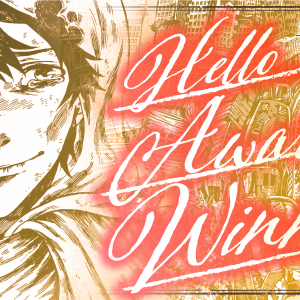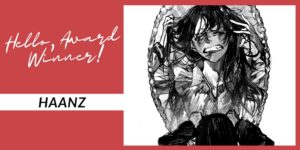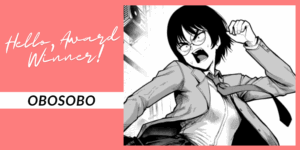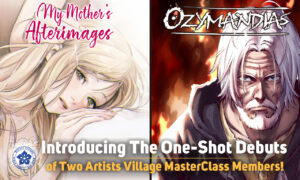
“Run and fight for your dreams!”
London based, Italian SMA8 Grand Prix Winner Elena Vitagliano, discusses life in the shadow of Naples, 70’s Shojo Manga and the power of influence…

SMA8 Grand Prix Winner!
Hello Elena!
ABOUT YOU
“I didn’t even know Manga existed when I was young!
Where did you grow up?
I grew up in a small town near Naples. It was quiet, but not too quiet. I now live in London, which is a world away!
Were you a manga fan when you were young?
No, I didn’t even know it existed! I did watch a lot of anime though, stopping the action to quickly draw what I saw on the screen. I watched everything I could get my hands on. I think everyone in Italy has watched at least one anime in their lives.
I got into manga when I was about 15. There was a small news store in my little town that suddenly had a manga on the shelf. I was like, wow! Such a thing exists?! Why didn’t I know about this?! Thanks to the advert showcasing other manga at the back of this volume, I learned that there were manga versions of the anime I loved watching.
After much searching, I discovered Naples’ only comic book shop, who also sold manga. I was transfixed, spending over 5 hours on that first visit, just absorbing the pages, inspiring me to learn how to draw this amazing art. I’ve always loved drawing, creating stories about talking tomatoes and carrots as a child, but I never thought I could make a career out of it.

Home, sweet home…
And here you are, an SMA Grand Prix winner! Its been an incredible journey from drawing tomatoes to winning the SMAC Grand Prix Award.
Yes, the more I drew, the more confidence I gained. Little by little, I dared myself to believe there was a chance. It was a good result!
An incredible result! So, when you’re not drawing manga, what’s a typical day like?
I teach art and media part-time and hold manga workshops for young people, which is very rewarding. I also attend a lot of comic-cons, there are several in the UK, including “MCM Comicon”, a huge event with shows in London, Birmingham, Manchester and Glasgow. Con’s are a great place to network and get commissions, which is a big part of my job. When I’m not schmoozing at events, I’m drawing, drawing, drawing, and practicing Yonkoma’s of course. Making these quick, four panel stories is a vital part of becoming a good manga creator. I also read lots of essays, which helps with understanding theory.
I somehow manage to squeeze a social life in there too, making sure I spend time with friends, cinema visits etc., helps give a balance to my life.
I’ve recently moved to the outskirts of London. It’s a lot quieter than inner London, I can afford a bigger house and a studio unit just to myself. Its a great environment to draw manga.
I read a lot of manga too, purely for study of course 😉

Elena’s Yonkoma, a Mangaka’s best friend
Do you listen to music when you draw manga? Who are your favorites?
Thats a tricky question…shall I tell the truth? Sometimes I listen to anime songs, both in Italian and Japanese. In fact, one of my goals is to sing the opening song to an anime of my own manga! I find listening to soundtracks the perfect background music when I’m working on a particularly challenging piece. I also listen to audiobooks, especially when I have a deadline to meet. The last deadline I worked towards, I managed to listen to 5 full audio books!
What’s your favorite audiobooks?
I enjoy the classics, like Anne of Greengables. They’re actually very good. I tried reading these books when I was younger, but I didn’t appreciate them.

MCM Comic-con, Manchester
ABOUT MANGA
“When you copy from everywhere, you don’t copy from anywhere!”
Which manga, has been most important to you?
I learned a lot from “Berusaiyu no Bara” (“The Rose of Versailles”), or “Lady Oscar” as it was known in Italy. I loved them back then, and still enjoy reading them now. I also loved the works of Nippon Animation, they were making anime of kids classics at the time, such as Heidi.
Manga specifically? I loved “Slam Dunk”, in fact, anything by Inoue sensei. Mitsuru Adachi is another favourite. If you don’t know him, google him! His work is simple but very effective and captivating.
Also, the work by the Shojo mangaka of the 70’s. I love the expressive nature to it, how they were able to capture a character’s feelings perfectly. You can tell what kind of person this is on those pages.
Sometimes I don’t read the manga at all, just stare at the art, which still has a huge influence on me. I see something I like, I try to make it mine and use it my own way. I don’t even know where the influences come from anymore! When you copy from everywhere, you don’t copy from anywhere!
Is manga popular in Italy today?
I think it is popular, and its growing all over Europe, ever since “Dragonball” first aired here. Lots of people are now hooked on “Attack on Titan” and “Death Note”.
There are a lot of young people read only manga at the moment, and not Italian comics at all. We do have a strong comic book tradition in Italy, the story structure is completely different, but I do like to study the drawings.
So Manga is competing with the Italian market?
Yes, I think so. There is good Italian stuff, mostly from a publishing house called Sergio Bonelli Editore which produces Dylan Dog, created by Tiziano Sclavi and Claudio Villa, is a paranormal investigator living in London.. Diabolik, by sisters Angela and Luciana Giussani, is also very famous, about a thief who performs special tricks to help in his adventures. The Italian comic book industry is finally attempting to expand their audience, as most of their current work is for adults without much to appeal to teenagers, unlike manga.
What kind of environment do you work in?
I used to work with real ink, then I got a Cintiq, a digital tablet, which is very practical. I still draw by hand for commissions, but for comics I use Cintiq which saves me a lot of time. I also change my mind quite often, especially facial expressions, sometimes 7 times so this tech is perfect for saving time and giving me enormous flexibility.
I also have an iPad which allows me to draw the pages when I’m out and about, I completed a full page in a car once!

Tablets, very practical
What do you prefer to work in? Ink and paper or technology?
Ideally ink and paper. But there’s lots of disadvantages, as a professional to working with traditional tools, including the ever looming deadline! I do like drawing with traditional tools whenever I can.
What kind of challenges do you face creating manga?
Hmm, for every stage there is a challenge. First, you have to get the right idea. My head is usually a whirl with ideas, but this doesn’t mean they are all good! Put it on paper, find a strong character, and justify why they are the protagonist.
Creating storyboards beforehand can be a challenge, though they are indispensable as they allow me to think about all of the angles and layout before I start the manga. Also, let’s not forget about finding an element to the manga that isn’t too predictable, but not so different as to loose my audience!
Drawing the actual manga can be very challenging too, and I hope to get better and better. In just one year, I’ve seen how much I’ve improved, but I need to keep drawing. A lot.
ABOUT SMA8
“This is going to be interesting!!”
What has been the reaction to your award?
It’s been surreal and very overwhelming! I’ve been interviewed by the Italian web magazine “anime.everyeye.it“, after winning the prize, and have several more interviews scheduled with other Italian magazines.
I sketched a portrait of Asa Butterfield, who stars in the Scorsese movie Hugo. He loved it and shared it on social media which helped show my work to the world. In fact, I’ve gone from 150 to over 400 Twitter followers in the in past two days!
I’m not used to receiving all this attention so its taking some getting used to, if I ever get used to it at all!What was your reaction to the theme of SMA8?
This is going to be interesting! I thought up several ideas about depicting a fair competition, with everyone starting from the same position.
The idea that became “The Cruelest Rule” caught my attention pretty quickly, more than any other idea. I met online with other members of the SMAC!ommuity, who helped me develop the idea further. By sharing my ideas with other members before I began, I was able to create a fuller story.
Also, by pure coincidence, I have flyers I hand out at cons which say “Run and fight for your dreams”!
That seamlessly brings us to the next question, how long did it take you to complete The Cruelest Rule?
Umm, from the initial idea, the marinating of the idea, took quite a long time, about 2 months. I kept changing my mind about the ending! I would think about the manga one day, then let it go, because there’s a danger of overthinking it! Drawing it, if I count real hours, I think about a day a page, plus added time for revising, changing my mind etc.
You won the Grand Prix Award, which is an amazing achievement, but for you personally, did it fulfill your expectations?
I was very happy working on it, and then when I finished it, I obviously started to see all the flaws. I’m happy with the idea, but everything can be improved. I would definitely work harder on the drawings.
THE FUTURE
“Silent Manga Audition opens lots of doors…”
So, the future. You’ve won the GP, what’s next?
In my mind, I’m already working on my next project! I have lots of ideas, but I’ve had this particular idea for a while now, so I’m at research stage. I like history and try to insert it everywhere I can. I’d like my next story to be set in Italy, so my hope is to work closely with the SMAC! editorial team and see if we can make something out of this idea.
I’ve entered the Silent Manga Audition seven times, so I’ve invested a lot in this competition from the beginning, especially in SMA6, where nothing happened! I was a little disheartened when I entered SMA7, deciding to take a break if I had the same result, but I was unexpectedly placed in the Extra Round 2, and won the Editor’s Award too! With my confidence overflowing, I entered SMA8, and I won the GP!!
I want to keep focusing on the SMA route, because it opens lots of doors. My dream is to work on a successful series under the guidance of the amazing SMAC! editors.
Have you got anything you’d like to shout out to the rest of the SMAC!ommunity? Any advice?
First of all, even if you think you don’t have good drawing skills, don’t worry. Focus on your strong points, not your weak points. Stress what you already do well, this will help you more than trying to get good at everything. Nobody is good at everything! Make it the strongest you can. Keep on trying, look at the winning entries and listen to the videos because they are very helpful. I have stacks of notes from watching them!
Also study as much manga as possible, and try to understand why you like it. What did they do with the panels? How did they express emotions? Silent Manga has to be simple, easy to follow and full of emotions. Good luck!
Thank you for letting me talk to you at 3am on Christmas morning! Again, congratulations on your winning entry. I for one, cannot wait to see what you create next!
If you want to gaze longingly at more of Elena’s work, visit the following sites…
Facebook: https://m.facebook.com/ElenaVitaglianoArtist/?ref=bookmarks
Instagram: elena_vitagliano_artist Follow me on Twitter – @chris_smac